Free radicals might not be the bad guys they’ve been painted as

A popular view of reactive oxygen species is of chemical bad guys shooting up your healthy body and causing ageing. These energetic radicals whack into proteins, lipids and DNA, denting or even destroying them. Antioxidants can supposedly take these radicals down, a sort of missile system in fruit, vegetable or pill form to neutralise the enemy.
Sadly, this attractive picture is false: antioxidant supplements aren’t sharp-shooting good guys and scientists digging into their high-energy nemeses have uncovered evidence that reactive species make positive contributions in the body. They’re active in healthy wound repair and all sorts of stress responses. Two of the most important are hydrogen peroxide and superoxide.
The link between free radicals and ageing harks back to research in the 1940s by US chemist Denham Harman. He put forward the idea that ageing was primarily due to oxidative stress: free radicals damaging DNA – causing mutations – and proteins.
‘It doesn’t require a great grasp of cell biology. Free radicals damage stuff and cause ageing. The theory became extremely popular and is still popular today to some extent,’ says Simon Melov at the Buck Institute for Research on Ageing in California. That popularity is demonstrated by a booming pill industry touting the great powers of antioxidants like vitamin E. The idea is so powerful that it withstands endless clinical trials showing no positive effects. ‘The outcomes seem to have had no impact on public awareness of the [lack of] efficacy of taking these supplements,’ adds Melov.
Bin the pills?
Still, free radicals can inflict serious damage. They are responsible for the progression of diseases such Alzheimer’s and Parkinson’s, inflicting damage on neurons, and implicated in coronary heart disease, diabetes and even cancers, according to Kelvin Davies of University of Southern California, Los Angeles. But stopping them is not so easy.
‘If you undergo open heart surgery, you heart is perfused with a cocktail of antioxidants in very high concentrations,’ says Davies. This works and protects you against oxidative damage. Similarly, lycopene and beta-carotene are found in high concentrations in tomato and carrot, respectively, and protect plants against free radicals in their own tissue.
‘The experiments done years ago gave us the idea that lycopene and other plant molecules could protect us. Put large amounts in a test tube, add a known generator of reactive species such as hydroxyl radicals, throw in a bit of DNA or protein, and you can show that the presence of lycopene inhibits oxidation of the protein or DNA,’ says Davies. ‘But getting that concentration in your body is just not feasible.’
When you’re sitting on the couch enjoying a beer, that’s when your mitochondria generate free radicals
An antioxidant supplement pill spreads too thinly around the body, a few molecules here or there, whereas there’s so much lycopene in tomatoes that it turns them red. Similarly, vitamin E does have antioxidant effects, but delivering it precisely to the lipids standing shoulder-to-shoulder in a mammalian cell membrane and caught up in an oxidation chain reaction is another problem entirely.
Big picture studies confirm as much. A 2007 meta-analysis reviewing 68 studies of vitamins and pooling data from 47 trials found a 5% increase in rate of early death, which was linked to problems associated with taking supplements of beta-carotene, vitamin A and vitamin E.1 Not much solace for young, healthy vitamin eaters.
ROS in the body
Reactive oxygen species (ROS) are generated via two main paths in the body. First, a set of enzymes generates them for immune cells like macrophages and neutrophils, which use them to target and destroy pathogens. Second, they are generated in mitochondria as a consequence of metabolism. ‘The mitochondrial electron transport chain leaks about 5% of the electrons passing along it directly to oxygen,’ Davies explains. ‘This results in a one-electron reduction of oxygen which generates a superoxide ion radical.’
Superoxide is a reductant, but it gets converted into hydrogen peroxide by superoxide dismutase, an extremely common and powerful enzyme found in all organisms. Between 1–5% of oxygen you consume ends up going down this path and the byproducts are important biologically.
It’s not when mitochondria work hard that they generate more oxidative stress. ‘When you are exercising, your mitochondria are fine-tuned and doing their job nicely, and there’s little oxidative stress. But when you are sitting on the couch, enjoying a nice bowl of chips and a beer, that’s when your mitochondria generate free radicals,’ says Melov.
The electrons pass from electron carrier to carrier, but without adenosine triphosphate (ATP) being generated, the chain tends to stall and electrons go on to oxygen and produce superoxide. Measuring the rates of superoxide production and understanding oxidative stress level in multiple cell types under different physiological conditions have been difficult in vivo, as it is technically challenging and can require expensive equipment.
When Siegfried Hekimi at McGill University in Montreal discovered a remarkably long-lived Caenorhabditis elegans mutant in 1996, it made sense that the mutation caused abnormalities in their mitochondria.2 ‘[We thought] maybe the dysfunction caused lower ROS production,’ Hekimi recalls. ‘But then we realised that the dysfunction actually increased ROS production.’ The extra ROS were good for the nematode mutant and allowed it live longer.
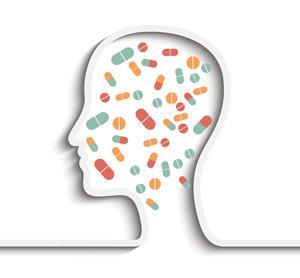
This went against the idea that our mitochondria become dysfunctional as we age and start spewing out damaging free radicals. Further research in Hekimi’s lab pointed to ROS production being beneficial. ‘It turned on a stress response mechanism that allowed you to live longer,’ he says. The idea is that ROS modify special reaction pathways in cells, tweaking proteins with a conductor role, which then changes global patterns of gene expression.
‘How the changes in gene expression patterns bring about a physiological change in cells or an organism, which allows them live longer, we just don’t know,’ says Hekimi. But the evidence is piling up that high-energy reactive species are used as signalling molecules. Understanding their code and how they seem to allow us to respond to stress could usher in new classes of therapy, scientists now believe.
Dogma be gone
Work with fruit flies, worms, zebra fish and amphibians has chipped away at the idea that ROS are bad for you. ‘The dogma five years ago was that reactive oxygen species damage cells and there was a hypothesis that over time they cause ageing. But studies in my lab and others now point to a happy medium level of ROS, not too high, but not too low, which can promote repair and regeneration,’ says Enrique Amaya at the University of Manchester, UK.
Amaya’s lab became intrigued by ROS after scrutinising which genes change their expression levels when the tail of a Xenopus frog tadpole is amputated.3 Over a few weeks, all tissues and even the spinal cord are repaired and regenerated. ‘We are interested in the mechanism; asking what genes go up and down during this process,’ says Amaya.
ROS are toxic for cells at high concentrations but at low levels they help organisms initiate biochemical self-repair and defence mechanisms
A thousand genes shifted their expression levels and many enzymes involved in producing reactive oxygen species were up-regulated, hinting at a role for ROS.4 ‘We reported not only that reactive oxygen species are produced [during regeneration], but if one doesn’t allow ROS to be produced during an injury, tadpoles do not regenerate their tails,’ Amaya says.
In his lab at the University of California, San Diego, Andrew Chisholm uses the nematode C. elegans to study wound repair – its skin is almost one big skin cell. If punctured, a nematode could simply leak away, so rapid repair is critical. ‘Our results led to the somewhat surprising conclusion that reactive oxygen species from mitochondria can promote wound repair,’ says Chisholm, with the evidence pointing to superoxide.5
After wounding, calcium seems to surge into the mitochondria, which disrupts electron transport and leads to the production of superoxide. When his lab created mutants that did not allow calcium to flow in, the wound did not heal.
The short-lived superoxide modifies and inhibits a guanosine triphosphate (GTP) binding enzyme (Rho1) that normally blocks the assembly of a polymeric microfilament protein (F-actin) at wound edges. ‘In all species, the assembly of F-actin is required to close a wound. So mitochondrial superoxide transiently inhibits an inhibitor of wound healing, opening a window for improving wound healing,’ explains Brigitte Galliot at the University of Geneva in Switzerland, who studies wound healing in the invertebrate Hydra and identified superoxide production in its wounds.
She says this within-cell ROS signal after injury and its protective role had been completely overlooked, possibly because ROS had a known role in clotting and inflammation via cell-to-cell signalling. The more limited nematode context, combined with Chisholm and his co-author Suhong Xu’s ability to visualise superoxide production with sensors to record the frequency and intensity of each ‘mitoflash’, lay at the heart of the revelation, Galliot says.
‘This discovery opens new ways to look at therapeutic approaches to treat chronic wounds. The positive effect of ROS on chronic wounds is already known,’ she says, but the mechanism was a mystery, whereas ‘now it will be possible to focus on the right target’. Approaches might include boosting superoxide production, preventing its too rapid degradation or targeting Rho.
‘This study indicated a crucial, non-housekeeping function of mitochondria as detectors of organism stress and mediators of tissue damage responses,’ adds Philipp Niethammer at Memorial Sloan Kettering Cancer Center in New York, who wrote a preview of the paper. His lab studies early signalling molecules, those generated within seconds of a wound being inflicted.
His breakthrough finding arrived serendipitously when he was studying a new hydrogen peroxide sensor. He induced a wound in zebrafish to attract white blood cells (leucocytes), which generate hydrogen peroxide, but discovered that it was the hydrogen peroxide that signalled leucocytes to the wound in the first place.6
‘ROS are toxic for cells at high concentrations,’ Niethammer notes, and it is assumed they worsen an already bad situation. This is still true in some cases, but he points to the ‘increasing notion that low levels of ROS help organisms to initiate biochemical self-repair and defence mechanisms, which allow them cope with the stressful situation’.
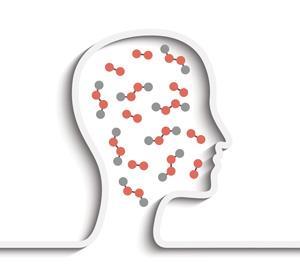
Amaya is optimistic about therapeutic potential. ‘The ultimate goal would be to try to get human patients to produce a beneficial level of ROS to facilitate both wound healing and regeneration, as [the worms] are clearly doing,’ he says. What’s needed now is to unravel the mechanisms and learn about the targets of these highly charged molecules.
Getting the balance right
Enzymes such as superoxide dismutase and peroxidases act to keep down the tide of superoxide and hydrogen peroxide sloshing about inside cells, but damage still occurs, especially if hydroxyl radicals are formed. This can happen if hydrogen peroxide undergoes a third electron reduction.
The body is set up with abundant enzymes to first deal with superoxide and then with hydrogen peroxide. ‘In multiple organisms it has been shown that deletion of either of those sets of enzymes is almost always lethal,’ says Davies.
‘In the last 20 years it has become clearer that damage-removal or repair enzymes are really important for continued health,’ he explains. ‘The hydroxyl radical is extremely damaging. It will damage lipids, proteins, carbohydrates and DNA indiscriminately.’ There is also an abundance of enzymes that selectively recognise oxidised proteins, chop them up and reuse the good amino acids for new proteins. Proteasomes are one such group of enzymes, found everywhere in the cell expect mitochondria, where Lon proteases do the same job.
Damage repair is where ageing and free radicals may tie in. It’s all wrapped up in a process called adaptive homeostasis. If you encounter smog, you suffer slight damage to your proteins, but this is repaired right away. ‘If your hydrogen peroxide levels increase slightly, it doesn’t have to be a big increase or cause damage, then cells will respond by making proteasomes and other protective enzymes,’ Davies explains.
This adaptive homeostasis process sees the body change to a more stressed state, which can last for a few hours, before reverting to normal. The production of superoxide and especially hydrogen peroxide, Davies believes, are major signals; they flag signal transduction pathways. These pathways, such as NF kappa B, may then turn up the production of perhaps 50 protective enzymes, and turn down 50 or so other enzymes, says Davies.
Enzymes that remove oxidised proteins appear to lose function with age, however. ‘Proteasomes and Lon protease from old cells or cells from older people tend to have less activity,’ says Davies. ‘Adaptive homeostasis capacity is very effective in young worms, flies and mice, but declines dramatically towards the end of life. So our ability to cope with chemical stresses or oxidative stresses falls away.’
Signal role
Reactive species have a role in healthy cells as signalling molecules, but why choose potentially damaging, high-energy agents to signal stress? ‘Cells are pragmatic. These things are around, they have properties, so the body uses them,’ Hekimi explains. His further studies on C. elegans revealed evidence for free radicals being involved in a cell-death (apoptosis) signalling pathway physically situated on the mitochondria,7 and he has argued that the ‘mitochondrial free radical theory of aging’ should be consigned to history.
Free radicals are important signalling molecules for biology; the challenge is to dissect out what is optimal versus what is pathology
‘Our conclusion is that reactive oxygen species can act in a pro-longevity fashion, and therefore they are a response to the body ageing. It looked like they were causing it, but it’s a response to combat it,’ he adds. How it does so is probably via signalling pathways, relay chains of proteins that ultimately turn up or down the volume of proteins through gene regulation.
But signalling in biology is usually thought of as two complementary binding surfaces recognising one another and generating a signal. ‘This is difficult to envision with ROS, small chemicals that oxidise,’ says Niethammer, but it is possible they broadcast messages to a wide audience of proteins.
‘Phosphorylation of amino acids like threonine, tyrosine and serine can dramatically change the activity of a protein,’ Amaya observes. The same thing could be happening with reactive species, since the amino acid cysteine and its disulfide bonds are especially susceptible to oxidation by ROS. ‘That could change the shape or activity of the protein, allowing new proteins to bind it or preventing others,’ says Amaya.
‘ROS oxidation doesn’t need an enzyme and it’s much more ubiquitous. It can change proteins, yet is not specific,’ he adds. To really answer this question will require looking at changes in proteins on a global scale, something his lab has embarked upon.
‘Free radicals are important signalling molecules for biology,’ Melov concludes. ‘The challenge is to dissect out what is optimal versus what is pathology. Therein lies the problem.’
In the meantime, the antioxidant industry remains in rude health. Billions of dollars are reaped selling useless supplements, in the face of overwhelming evidence against their effect.
‘The idea you can get more effective compounds from a pill than you would from eating fresh fruits and vegetables is completely unfounded,’ says Davies. But, this premise is underpinned by the folksy simplicity and impressive terminology of ‘good antioxidants versus bad free radicals’, making it remarkably popular. The science is more muddled: reactive species can be good or bad, depending on the context and dose.
Anthony King is a science writer based in Dublin, Ireland
References
1 G Bjelakovic et al, J. Am. Med. Assoc., 2007, 297, 842 (DOI: 10.1001/jama.297.8.842)
2 B Lakowski and S Hekimi, Science, 1996, 272, 1010 (DOI: 10.1126/science.272.5264.1010)
3 N R Love et al, BMC Dev. Biol., 2011, 11, 70 (DOI: 10.1186/1471-213X-11-70)
4 N R Love et al, Nat. Cell Biol., 2013, 15, 222 (DOI: 10.1038/ncb2659)
5 S Xu and A D Chisholm, Dev. Cell, 2014, 31, 48 (DOI: 10.1016/j.devcel.2014.08.002)
6 P Niethammer et al, Nature, 2009, 459, 996 (DOI: 10.1038/nature08119)
7 N Jiang et al,J. Biol. Chem., 2003, 278, 21678 (DOI: 10.1074/jbc.M300286200)
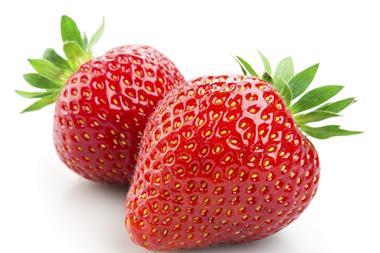



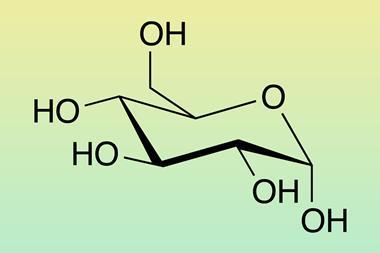
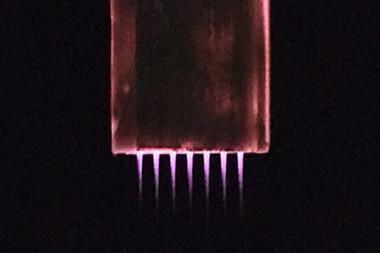






No comments yet